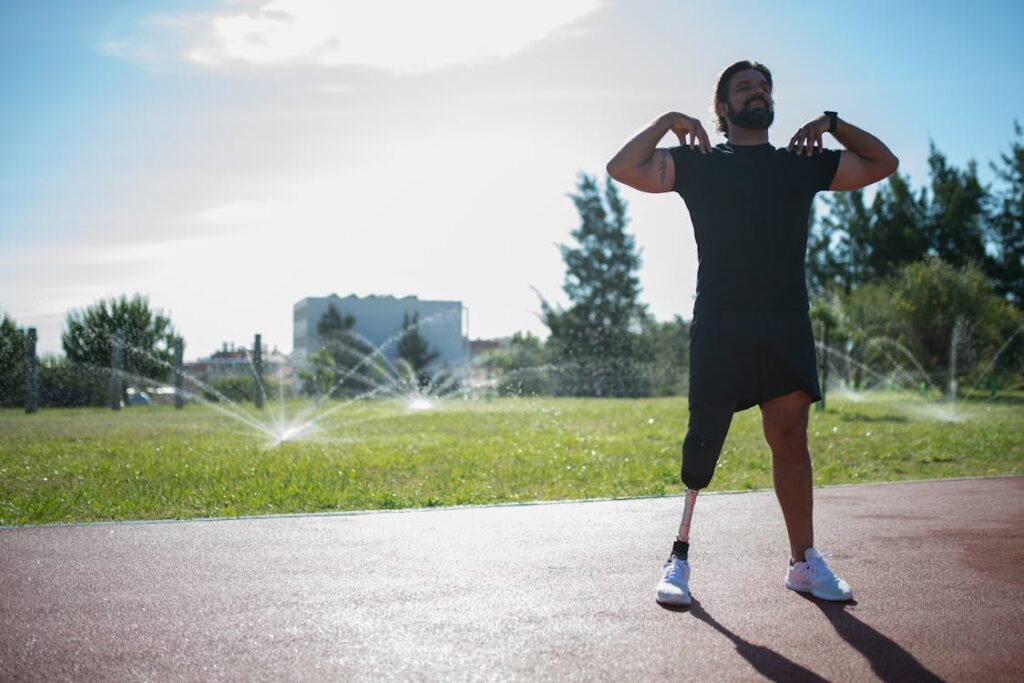When someone gets a prosthetic limb, most people focus on the visible parts—the high-tech foot, the lightweight materials, or the smart sensors. But there’s one part that often gets overlooked, even though it plays the biggest role in how that prosthetic actually feels to wear. It’s not flashy. It doesn’t have any electronics. But it’s the first thing a user notices every time they put their prosthesis on.
That part is the socket.
The socket is the piece that connects the residual limb to the prosthesis. It’s where the skin meets the device. It’s where pressure is applied, where movement begins, and where comfort is either made or lost. If the socket isn’t right, nothing else matters—not the materials, not the design, not the technology.

Understanding the Role of the Socket in a Prosthetic Limb
When people think about prosthetics, they often imagine the external parts—maybe a carbon-fiber leg, a robotic arm, or a stylish foot that looks like it belongs on a magazine cover.
But the most important part isn’t the one you see. It’s the socket. This is the part that directly touches the user’s skin. It’s where the prosthetic starts, and everything else is built around it.
What Exactly Is a Prosthetic Socket?
Think of the socket as the interface. It’s the bridge between the body and the artificial limb. The socket holds the residual limb and transfers weight, pressure, and motion from the body to the prosthetic device.
It also absorbs shock, maintains alignment, and supports comfort throughout the day. If a socket fits poorly, even the most advanced prosthetic limb can feel unbearable.
A good socket doesn’t just fit. It feels like part of the body. It shouldn’t rub, dig, or cause pain. It should move naturally with the person wearing it and feel secure during all kinds of motion—whether walking, running, or even standing still.
Why One Size Can’t Fit All
Every person’s body is different. Not just their height or weight—but their bone shape, muscle structure, skin sensitivity, and how their limb heals after an amputation.
Some people have short residual limbs, others have longer ones. Some have more muscle mass, others less. Some may have bony areas that stick out or skin that’s especially sensitive.
Because of these differences, making a standard socket just doesn’t work. You can’t take a generic mould and expect it to suit everyone. Imagine trying to wear shoes three sizes too small or walking all day in high heels that don’t fit your foot shape.
That’s what a bad socket can feel like—but worse, because the pressure is applied constantly, and often on a much more sensitive part of the body.
The key is individualisation. A prosthetic socket must be made for you, not just someone like you.
How a Bad Socket Affects Everyday Life
It’s hard to explain how much difference a socket makes—until you wear one that doesn’t fit.
A poor socket fit can cause:
- Pain that makes every step feel like walking on nails.
- Skin irritation, blisters, or pressure sores that make the limb impossible to wear for hours—or even days.
- Instability while walking, leading to poor balance and even falls.
- The need for constant readjustments and visits to the clinic.
- Frustration, depression, and a lack of confidence in public settings.
On the flip side, a well-designed socket can mean freedom. It can mean walking without pain, running after your kids, going to work without needing breaks every hour. It changes everything.
Why Comfort Is About More Than Just Padding
When people hear the word comfort, they often think about softness—like a cushion or pillow. But socket comfort is about much more than that. A soft socket that doesn’t support your limb well can actually cause more pain. It’s about balance, alignment, and precision.
A truly comfortable socket:
- Spreads out pressure evenly across the limb.
- Avoids sensitive areas like scars or bony points.
- Locks in place securely, without feeling too tight.
- Adapts slightly to swelling or shape changes throughout the day.
That’s not something a mass-produced socket can offer. It takes attention to detail, the right tools, and a deep understanding of both prosthetics and the human body.
The Real Cost of Skipping Customisation
Sometimes people choose off-the-shelf solutions because they’re quicker or cheaper in the short run. But the long-term cost of a bad socket is far higher. That cost comes in the form of medical issues, constant replacements, reduced mobility, and emotional exhaustion.
At Robobionics, we’ve seen time and time again that when someone switches to a custom-designed socket, the change is immediate. Their posture improves. Their gait becomes smoother. They walk longer without breaks. They smile more.
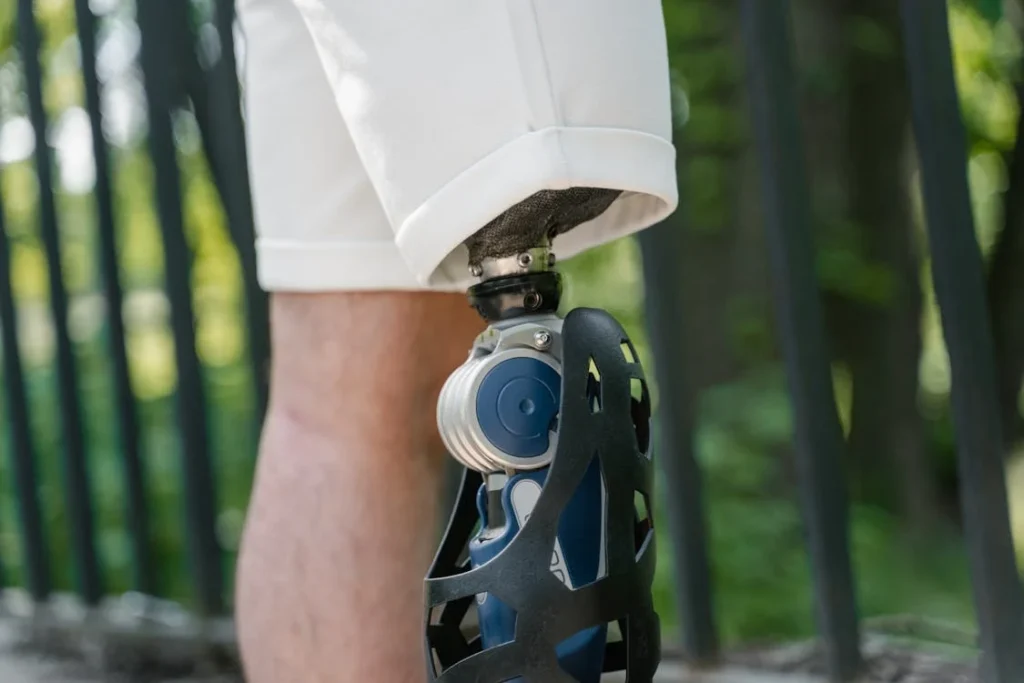
The Science and Art Behind Custom Socket Design
Designing a custom socket is both a scientific and artistic process. It’s not just about measuring a limb and moulding a shape.
It’s about understanding how a person moves, how their muscles shift when they sit or stand, and how their skin reacts to pressure and temperature. A well-designed socket is built around the user’s life, not just their limb.
How the Process Begins
Everything starts with a conversation. At Robobionics, we first sit down with the person who will wear the prosthetic. We don’t start by taking measurements—we start by listening.
We ask about their lifestyle, their goals, what kind of movements they do every day, and even what has frustrated them in the past with other prosthetics. This conversation gives us clues about how their socket should be designed.
Once we understand the person, we begin the technical work. We take a detailed impression of the residual limb. This is done either using traditional casting materials or with advanced digital scanning.
The goal is to capture not just the size of the limb, but its contours, pressure points, and soft tissue areas. Even small irregularities can affect the fit, so this part is handled with care and precision.
Digital tools allow us to map the limb in 3D, which makes it easier to design a socket that is accurate to the millimetre. It also helps us simulate how pressure will be distributed once the socket is worn, helping avoid future pain points.
Why Pressure Mapping Matters
The human body isn’t uniform. Some parts of the limb can handle pressure quite well, while others are extremely sensitive. Bone ends, scars, or areas with thinner skin need to be protected. Other regions with more muscle or fat can support more weight. If a socket doesn’t take this into account, it can lead to discomfort or even injury.
This is where pressure mapping becomes important. We use tools that measure how pressure is applied when the user wears a test socket and begins to move. The results show us if any area is experiencing too much stress.
From there, we adjust the socket design to redistribute pressure more evenly.
What this does is simple but powerful. It reduces the chances of soreness, makes the socket feel more natural, and allows the person to use their prosthetic for longer periods without discomfort.
The Importance of Volume Fluctuation
One of the biggest challenges in socket design is dealing with how a residual limb changes shape throughout the day. This is called volume fluctuation. It can be caused by many factors—temperature, activity level, fluid retention, or even diet.
A socket that fits well in the morning might feel too tight by the afternoon.
To solve this, we design sockets that can adapt slightly to these changes. This might involve using materials that have a little give or designing inner liners that provide a bit of cushioning and flexibility.
We also consider ways to help users adjust the fit during the day without needing to visit the clinic.
Understanding and planning for volume changes is one of the key things that separates a basic socket from a custom one. It’s the difference between something that just works sometimes, and something that works all the time.
Movement Analysis and Biomechanics
Every person moves differently. Even if two people have the same type of amputation, the way they walk, bend, or shift their weight might be completely different. This is why we include gait analysis and movement assessment as part of the socket design process.
By observing how someone walks and moves, we can understand how their body aligns. We look at how their hip, knee, and ankle work together.
We see if their posture is balanced or if they are compensating for discomfort somewhere. This information tells us how the socket needs to be shaped and angled.
It’s not just about fitting the limb—it’s about supporting the entire body. A socket that improves alignment can reduce back pain, increase walking speed, and even boost energy levels. When the body is balanced, movement becomes easier, and fatigue is reduced.
The Role of Materials in Comfort
The materials used in a custom socket make a huge difference. It’s not just about strength—it’s about how the material feels against the skin, how it handles sweat, and how it responds to movement.
Some materials are rigid, which offers better support for active users or those who carry more weight. Others are more flexible, which helps with comfort for people with sensitive skin.
Sometimes, we combine different materials in a layered structure. The inner layer may be soft and breathable, while the outer layer is strong and durable.
Another key aspect is thermal regulation. In a country like India, where temperatures can get very high, heat buildup inside the socket can be a major problem. We work with materials that allow air to circulate and reduce moisture, helping keep the limb cool and dry.
Choosing the right material is not just about engineering. It’s also about understanding the person’s day-to-day environment. Someone living in a humid coastal area might need a different material setup than someone living in a dry mountain region.
The Final Fitting and Beyond
Once the socket is built, we don’t just hand it over and wish the user luck. We go through a detailed fitting process, making small adjustments as needed. We observe how the user walks, ask about how it feels, and listen closely to their feedback.
Even after delivery, our team stays in touch. We encourage follow-up visits, especially in the first few weeks, to fine-tune the fit. As the body adapts, the socket may need small modifications.
And if the user’s goals change—say, they want to start running or doing more physical work—we can revisit the design to support that new direction.
A good socket design is never truly “done.” It evolves with the person using it.
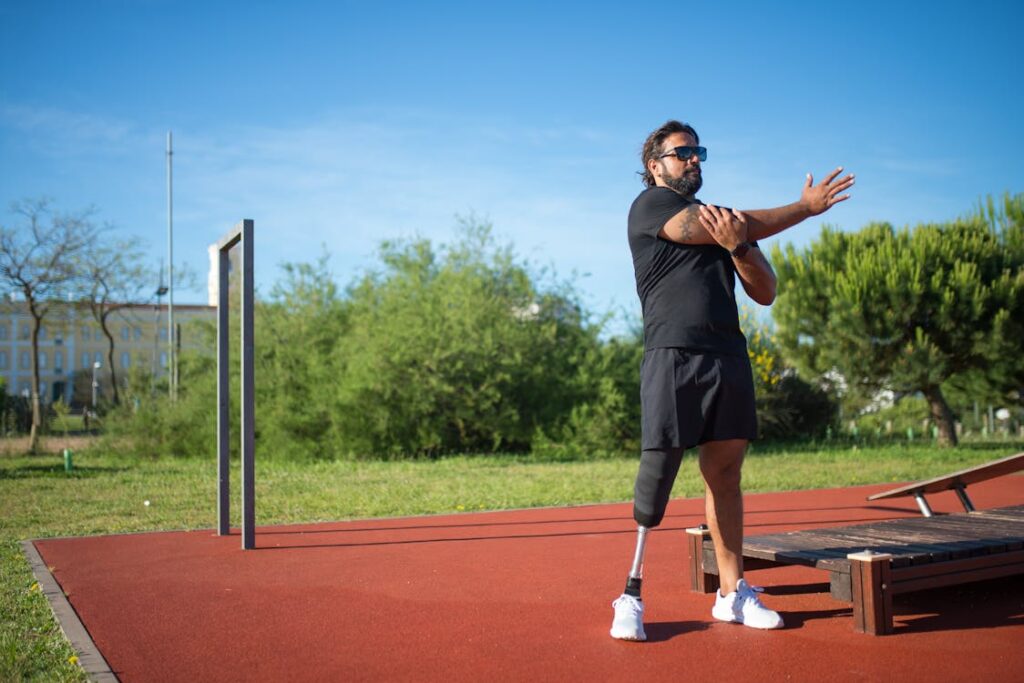
How Personalisation Leads to Long-Term Success
A prosthetic limb isn’t just a piece of equipment. It becomes part of a person’s body and life. That’s why personalisation—especially in the socket—isn’t a luxury. It’s a necessity.
Every element of the socket must reflect the unique needs, lifestyle, and goals of the user. The more personal the fit, the more successful the outcome over the long term.
Getting the Fit Right Is Just the Beginning
When someone first receives their prosthetic socket, there’s often a mix of emotions. There may be excitement about moving again, fear about the unknown, or worry about how the device will feel.
A good socket fit helps calm those fears right away. When the socket holds the limb comfortably, without pinching or slipping, it builds trust between the user and the prosthetic.
But this trust goes beyond the physical. A socket that fits well gives people confidence. It tells them, “Yes, you can do this.” They stop thinking about the device and start thinking about life—walking to the market, playing with their children, going back to work. Comfort opens the door to possibility.
Once the basic fit is right, we continue to shape the socket around the user’s personal goals. For example, someone who walks long distances every day may need more reinforcement in pressure-bearing areas.
Someone who enjoys yoga or needs to squat may require extra flexibility near the socket brim. A factory worker who stands for hours might benefit from a different alignment than someone who sits most of the day.
These small changes may seem technical, but they have a big impact. They reduce pain, prevent long-term injury, and improve quality of life.
Listening to the User Is the Key to Success
At Robobionics, one of our guiding principles is listening first. No one knows more about how a socket feels than the person wearing it. So we never assume. We ask. How does it feel when you walk? Does it hurt when you go up stairs? Is there any part that feels loose, tight, or hot?
We treat every piece of feedback as valuable. Sometimes, a user might not know how to explain the discomfort exactly. They might say, “It just feels off.” That’s a clue. We explore further—what do they mean by “off”? Is it a pressure issue? A balance problem? A skin irritation?
This kind of two-way communication turns the socket fitting into a partnership. It’s not just our job to design. It’s our job to understand. And that understanding leads to sockets that feel less like machines and more like extensions of the body.
The Impact on Mental and Emotional Health
Living with a prosthetic limb isn’t just a physical journey. It’s an emotional one. Many users go through grief, adjustment, and rebuilding of self-confidence.
A poorly fitting socket can make that journey harder. It can feel like one more thing going wrong. It can remind someone of what they’ve lost.
But a comfortable socket can become a symbol of strength. It allows the user to move freely, engage with others, and focus on their goals instead of their pain.
For many, it marks the beginning of independence. They no longer have to rely on others to move around. They can go out, run errands, or take a walk on their own.
This kind of freedom builds self-esteem. It helps users reconnect with their identity. It shows them that life after limb loss isn’t about limitations—it’s about adapting and growing.
We’ve seen this transformation up close. Users who once felt shy about going outside suddenly stand taller. They laugh more, move more, and talk about the future instead of just the past. And it all starts with a socket that truly fits.
The Role of Training and Education
Even with the best socket design, success doesn’t happen overnight. That’s why we provide training and education to every user. We teach them how to put the socket on properly, how to care for their skin, and how to adjust for minor changes throughout the day.
We also help them understand how the socket should feel. This may seem simple, but many first-time users don’t know what’s normal and what’s not. Is a little pressure okay? What about warmth or swelling? By explaining these things clearly, we give users the tools to manage their own comfort and avoid problems before they start.
In some cases, we connect users with physical therapists who can help improve balance, posture, and strength. These skills work hand-in-hand with a good socket. Together, they create a complete system of support—physical, educational, and emotional.
Keeping Up with Changes Over Time
Bodies change. Over months or years, muscle mass may shift, weight may increase or decrease, and the residual limb may shrink or reshape. This is natural, but it affects how the socket fits. That’s why long-term success depends on regular follow-up and updates.
At Robobionics, we encourage users to come in for periodic assessments. We don’t wait for problems to appear. We check the fit, update the design if needed, and make sure the socket is still aligned with the user’s life.
Sometimes, changes are minor—a small trim, a new liner, or a material adjustment. Other times, a completely new socket is needed. Either way, we treat every update as part of the journey. Comfort isn’t a one-time achievement. It’s something we work on together, year after year.
This approach doesn’t just prevent problems. It builds trust. Users know they can count on us, not just for a product, but for a relationship. They know we’re in it for the long haul. And that makes all the difference.
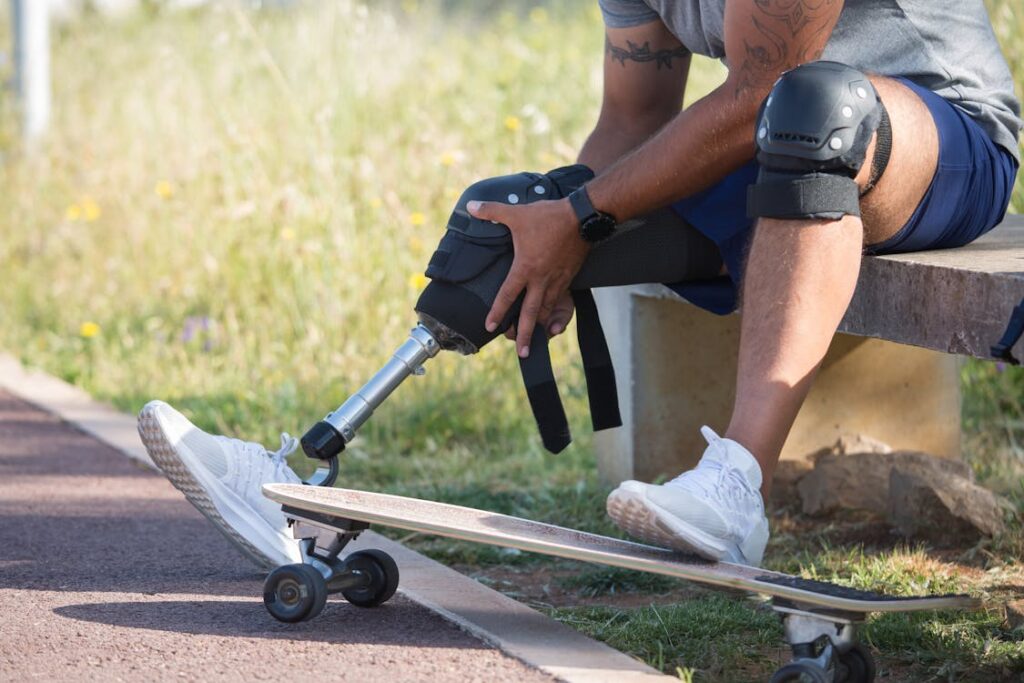
Innovations and Techniques That Make Custom Sockets Better
Custom socket design has come a long way over the years. From traditional plaster casting to cutting-edge 3D scanning, the methods used to create sockets today are faster, more precise, and more comfortable than ever before.
At Robobionics, we’ve embraced both the newest technologies and the timeless importance of hands-on craftsmanship. Because when the goal is comfort, every detail counts.
The Shift from Traditional to Digital
In the past, making a socket started with a plaster cast. The prosthetist would wrap the residual limb in wet bandages that hardened to form a mould. While this method worked, it was messy, time-consuming, and left a lot of room for error. Even small mistakes in the casting process could result in pressure points or uneven weight distribution.
Now, with the help of 3D scanning, we can capture the shape of a limb in seconds—with no mess and much higher accuracy. These digital scans are incredibly detailed.
They allow us to see subtle changes in contour, muscle tension, and even skin surface texture. We can then design the socket using specialised software, making precise adjustments in real time.
The result is a socket that fits better from the very first trial. It reduces the number of fittings needed, shortens the time to delivery, and most importantly, improves the user’s comfort from day one.
But while digital tools have revolutionised the process, they haven’t replaced the need for experience and judgement. Technology gives us the data, but it takes a trained eye and a deep understanding of human anatomy to know how to use it properly.
Hybrid Socket Designs: The Best of Both Worlds
No single material or method works for everyone. That’s why we often build hybrid socket systems that combine different materials and layers.
The outer layer might be rigid to provide stability, while the inner layer is soft, breathable, and gentle on the skin. In some cases, we even add gel or silicone liners that cushion sensitive areas without sacrificing support.
We also work with adjustable socket designs that include panels or tensioning systems. These let users fine-tune the fit on their own throughout the day.
For instance, if their limb swells slightly due to activity or weather, they can adjust the socket to relieve pressure and maintain comfort without needing a clinic visit.
These designs give users more control. They no longer have to accept discomfort as a part of life. They can respond to their body’s signals, stay mobile longer, and avoid complications before they begin.
The Role of Smart Materials
Material science has opened up a new world in prosthetics. Today’s sockets can be made from lightweight carbon composites, heat-sensitive plastics, and memory foams that mould themselves to the user’s shape.
Some materials can even respond to temperature and pressure, adapting their structure based on the user’s activity.
For example, some sockets include temperature-sensitive liners that keep the residual limb cooler on hot days and warmer in colder environments. This helps prevent skin issues and improves overall wear time.
We also use antimicrobial fabrics and moisture-wicking linings to reduce sweat and odour. These aren’t just cosmetic improvements—they’re critical to long-term health.
Excess moisture can lead to bacterial growth, infections, and skin breakdown. Keeping the limb dry and clean supports both comfort and hygiene.
Customisation Beyond the Physical Fit
While the physical fit of a socket is the top priority, customisation also includes aesthetic and lifestyle choices. Many users want their prosthetic to reflect their personality.
They might choose a colourful outer cover, a patterned liner, or even an emblem or logo that means something personal to them.
This type of visual customisation doesn’t affect the medical function of the socket—but it makes a big difference emotionally. It turns the prosthesis from a medical device into a part of the person’s identity. It becomes something they are proud of, not something they feel the need to hide.
At Robobionics, we encourage this kind of expression. We work with users to incorporate their style, their colours, even their story into the socket. Some see it as art.
Others see it as motivation. But in every case, it strengthens the emotional bond with the prosthetic, which supports long-term use and satisfaction.
Collaboration with Clinicians and Therapists
Socket design doesn’t happen in isolation. It’s part of a larger care team that includes doctors, physiotherapists, occupational therapists, and the user’s support system. That’s why we prioritise collaboration at every step.
We consult with medical professionals to understand the user’s health history, mobility goals, and any underlying issues that may affect socket use.
For instance, someone with diabetes might need special protection for their skin. Someone with joint issues might need a unique angle or suspension system.
We also work closely with physical therapists to ensure that the socket supports proper gait and posture. In many cases, the therapist provides insight into the user’s movement patterns that helps us improve the socket’s design.
This team approach ensures that the final product isn’t just medically sound—it’s practical, personalised, and ready for real life.
Continuous Feedback and Iteration
A good socket design process doesn’t end when the prosthesis is delivered. In fact, that’s often where the most important feedback begins. As the user starts to wear the socket in real-world conditions—walking to work, climbing stairs, sitting for long hours—they notice things that can’t always be predicted in a lab.
Maybe there’s a little discomfort after five hours of use. Maybe the socket feels different on colder days. Maybe there’s a spot that rubs just slightly when sitting.
We treat this feedback as gold. It helps us refine not just that user’s socket, but future designs for others with similar needs. Every piece of information adds to our knowledge base, making our sockets smarter, safer, and more comfortable over time.
And because we build long-term relationships with our users, we continue to support them as their needs change. Whether it’s a small tweak or a full redesign, we’re there to make sure the socket always supports—not limits—their life.
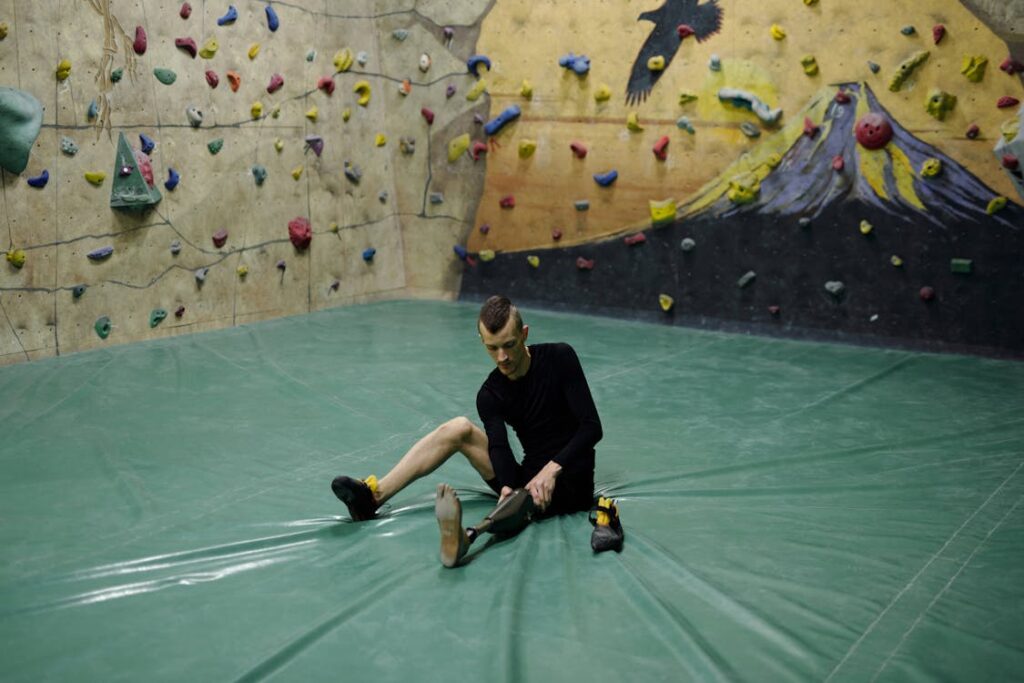
Real Lives, Real Change: The Power of a Well-Fitted Socket
The real power of custom socket design is best seen not in the lab or clinic, but in everyday life. When a socket fits just right, it allows the person wearing it to return to the world—not just as a patient, but as a parent, a worker, a student, or an athlete.
These are not abstract ideas. These are real stories, lived by real people, where the right socket made all the difference.
Rekindling Independence
Take the case of Anil, a 34-year-old from Pune who lost his leg below the knee in a road accident. After recovering from surgery, he was eager to get back to work as a warehouse supervisor. But the first socket he received, from a standard provider, felt wrong from the start.
It slipped during long hours of standing. It pinched behind the knee when he walked. By the end of the day, his limb was red and sore, and he dreaded putting the prosthesis on again the next morning.
When he came to Robobionics, we didn’t just take measurements. We watched him move. We looked at the way his job required him to lift boxes, climb small steps, and stand for extended periods.
We redesigned his socket to accommodate that lifestyle, adding small modifications that supported his posture and prevented slippage. The result? Anil was back at work in just over a week—with no pain, no fear, and more confidence than he’d had since the accident.
His case taught us something that we’ve seen many times since: a comfortable socket doesn’t just improve movement—it restores a sense of control.
Supporting the Young and Active
Children and teenagers often have different needs altogether. Their bodies grow quickly, and their lifestyles are more active and unpredictable. A child’s socket must be both supportive and adaptable. It must withstand running, jumping, playing, and sudden changes in size.
Riya, a 12-year-old from Nagpur, had her first lower limb prosthesis fitted at a government clinic. While the initial fit seemed fine, within six months it began to cause her pain.
She’d grown a few centimetres, and the socket no longer matched the shape of her leg. She began limping, and eventually stopped using the prosthesis altogether.
When her family came to us, we offered more than a replacement. We gave them a plan. We created a custom socket that could be adjusted over time. We taught her parents how to monitor changes in fit.
We scheduled check-ins every few months to catch issues early. Now, Riya not only wears her prosthesis every day—she dances with it. Literally.
Children like Riya remind us that socket design isn’t just about science. It’s about creating freedom and joy, especially for the youngest among us.
Overcoming Emotional Barriers
Socket discomfort doesn’t always show up as physical pain. Sometimes, it shows up as avoidance. Some users simply stop wearing their prosthesis—not because they can’t, but because it feels like too much effort.
They may feel embarrassed about the fit, or discouraged by how it limits them.
This was the case with Farah, a 45-year-old woman from Kerala who lost her leg due to complications from diabetes. Though she received a prosthetic limb from her local hospital, she never wore it for more than a few hours.
The socket was bulky. It made her leg look bigger on one side. It was hard to put on without help. So she gave up on it.
Her daughter reached out to us, asking if there was anything we could do. When we met Farah, we didn’t push her to walk. We asked her how she wanted the prosthesis to feel. She said she wanted it to feel “like it was mine, not something I borrowed.”
We designed a slim, custom socket with soft inner layers and a discreet outer finish that matched her skin tone. We showed her how to wear it without assistance. When she stood up in it for the first time, she cried.
Now, Farah walks to her local store every day. She helps in the kitchen again. And perhaps most importantly, she has stopped hiding. Her story reminds us that comfort is not just physical—it is deeply personal and emotional.
Beyond Comfort: Enabling New Possibilities
Not everyone who comes to us is simply looking to return to daily routines. Some are looking to push themselves further. Athletes, adventurers, and even dancers have approached us to design sockets that allow extreme movement, durability, and speed.
Designing for high-performance use means going beyond comfort—it means tuning every detail for precision. A marathon runner needs a socket that can withstand repeated impact without loosening.
A rock climber needs flexibility and strength. A farmer in a rural village needs a socket that resists mud, moisture, and long hours of walking on uneven ground.
These goals inspire innovation. We’ve used experimental materials, added vibration-absorbing layers, even integrated cooling channels for users in especially hot areas. In every case, the result is the same: a prosthetic socket that expands what the user thought was possible.
Building Trust Through Outcomes
Every one of these stories shares a common thread. It starts with discomfort, fear, or frustration. It ends with confidence, movement, and renewed purpose. And in between is a carefully crafted socket—one made not just with tools and materials, but with empathy and expertise.
This is the foundation of what we believe at Robobionics. The socket is not just a component. It is a lifeline. It is the foundation on which the rest of the prosthesis—and the rest of the user’s life—can be built.
We don’t just want people to wear their prosthetic limbs. We want them to embrace them, rely on them, and trust them.
And that trust starts with a socket designed not just for a limb—but for a person.

Conclusion
At the heart of every successful prosthetic journey is a socket that truly fits—physically, emotionally, and functionally. It’s not enough for a prosthetic to look good or use advanced technology. If the socket isn’t designed with care, precision, and personalisation, comfort will always be out of reach.
Custom socket design isn’t just a technical process—it’s a human one. It requires listening, understanding, and tailoring every detail to match the unique body and life of the person wearing it. When done right, it builds trust, enables independence, and opens up a world of possibilities.
At Robobionics, we believe comfort should never be compromised. Because when the socket fits, life fits better.



